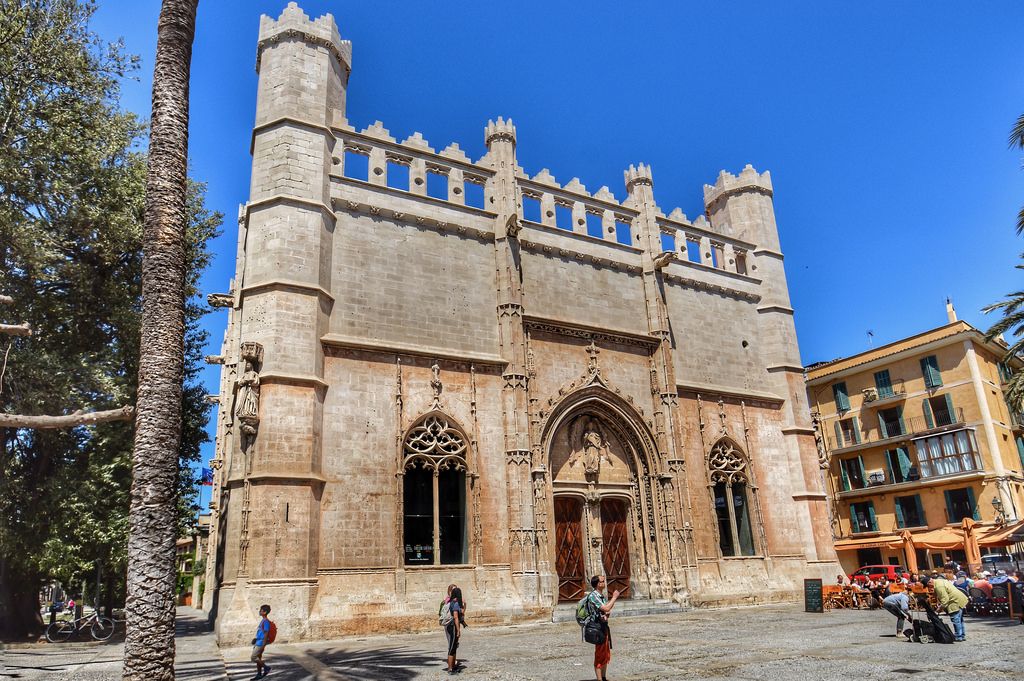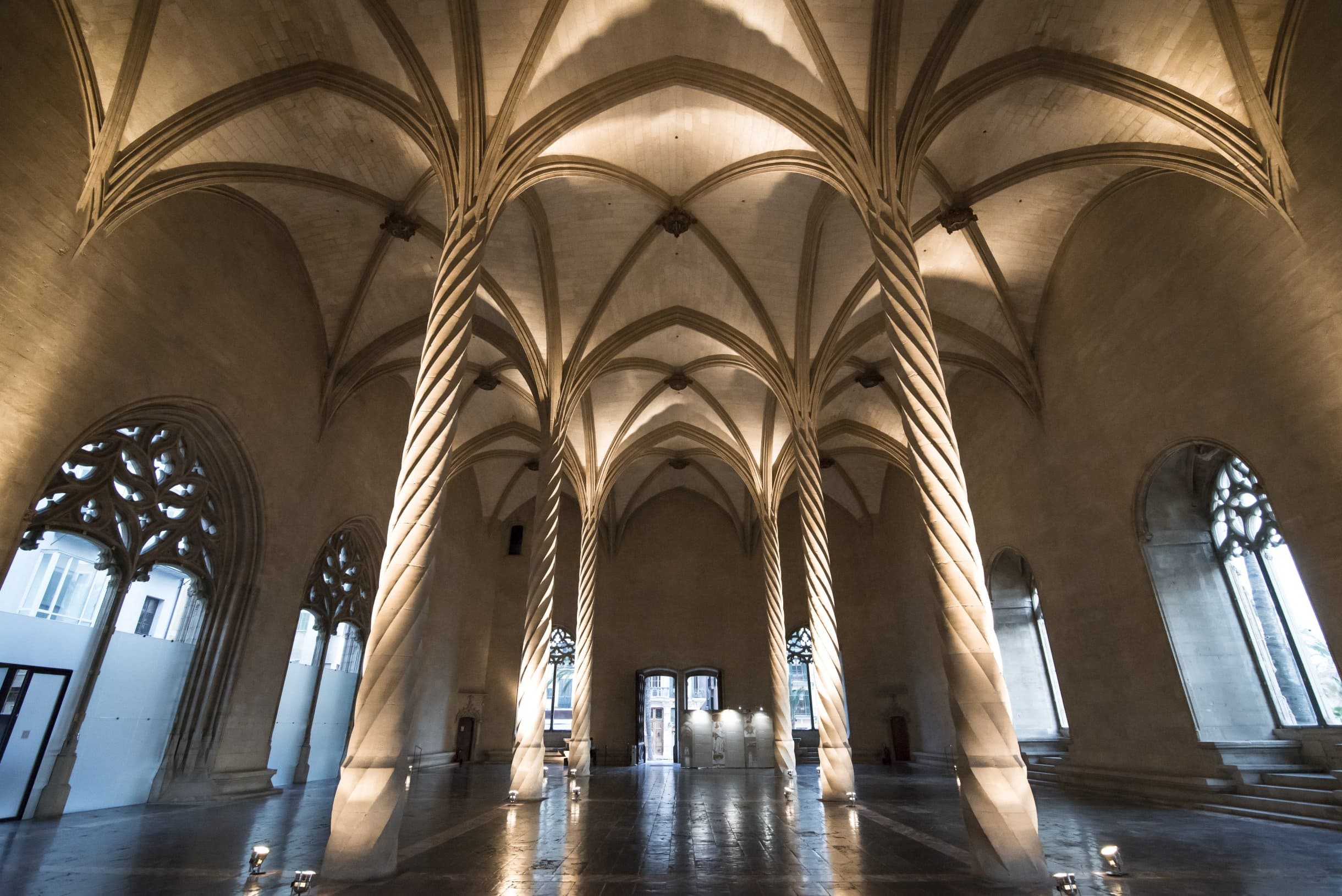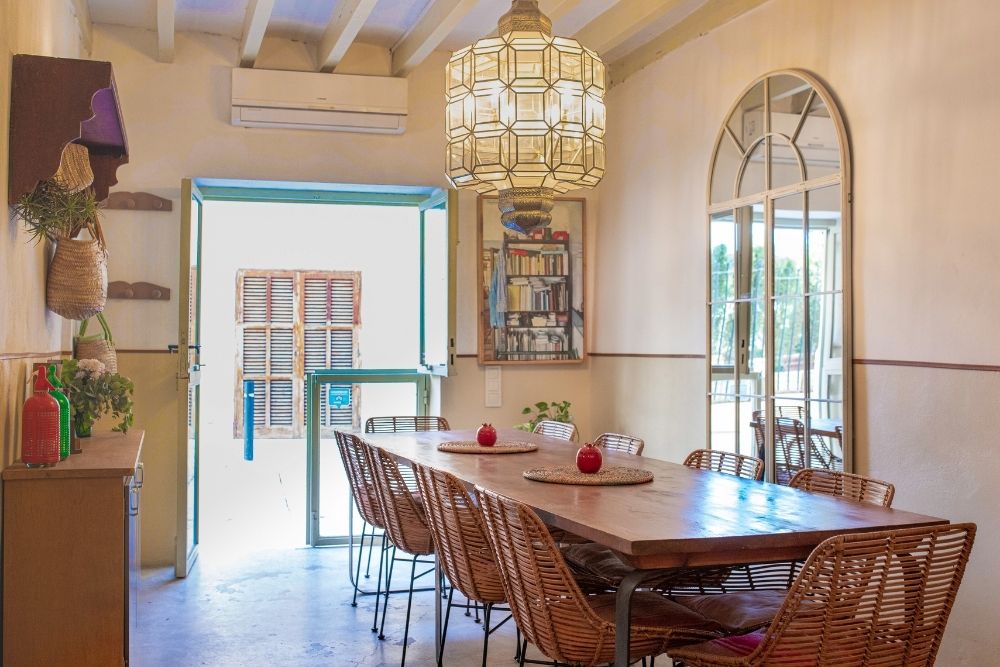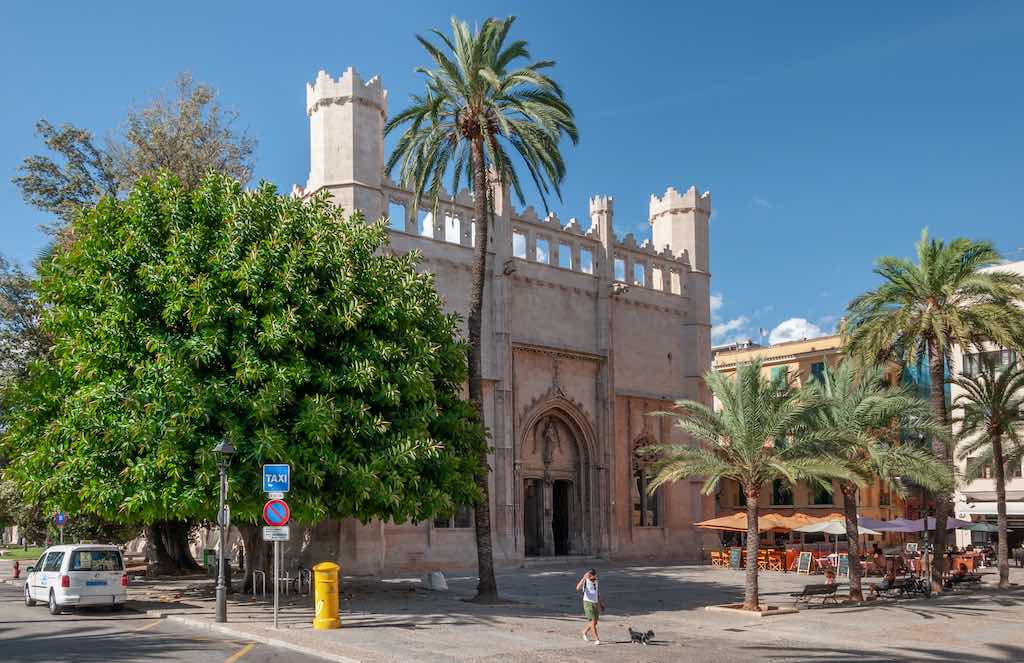Palma has a lot to offer, first-class food, good wines, paradisiacal beaches, and many places to visit and get to know. The old town is one of the most attractive areas of Palma, where you can enjoy the night with its wide variety of bars, pubs, and restaurants, especially in the La Lonja neighborhood.
In this area, we can find the Lonja de Palma, which after the beautiful gothic Palma cathedral is one of the places to admire in this beautiful city. Let’s take a look at a little bit of the history of this mythical building and what La Lonja has to offer us.
La Lonja de Palma

La Lonja is a marvel of flamboyant Gothic, built in the fifteenth century. Its history begins in 1426 when the merchants’ college of Mallorca commissioned this public building to the architect Guillem Sagrera. Construction was carried out between 1425 and 1452.
Its objective, in addition to covering the functional needs of buying and selling products, was to ennoble the merchant profession. For this reason, a grandiose commodities exchange was requested, adorned with numerous statues of saints and angels and impressive architectural elements.
This is the reason for its location next to the port of the city, where most of the goods that were offered for sale inside it arrived. And, in addition, very close to the Cathedral and the Royal Palace of the Almudaina, which are the seats of civil and religious power.
La Lonja de Palma de Mallorca was for hundreds of years the main seat of commerce in the city. However, in the seventeenth century, it became, practically, a mere warehouse for goods and agricultural products. In later centuries this space took on various uses: prison, hospital, and gunpowder warehouse, among others.
Since the end of the 20th century, it has been used as an occasional venue for a wide variety of exhibitions.
La Lonja meaning
“La Lonja” is a Spanish word that translates to “the hall” or “the exchange” in English. It typically refers to a building or a complex of buildings that were historically used as a market or an exchange for trading goods, particularly in the Middle Ages and the Renaissance period.
In the context of architecture, “La Lonja” typically refers to a specific type of building that was used for commercial activities such as trading of goods and money exchanges. These buildings were typically located in the center of a town or city, and often had a large central hall or courtyard where merchants could gather to conduct business.
In Spain, there are several examples of “La Lonja”, one of the most famous is the Lonja of Palma de Mallorca, is a Gothic-style civil building in the city of Palma, on the island of Mallorca, Spain. Today is a UNESCO World Heritage Site, and it is considered one of the most important Gothic civil building in Spain.
La Lonja architecture
The exterior of the Lonja de Palma de Mallorca may not seem too striking. It is a prismatic construction, being almost a cube. This generates four facades, all of them decorated with some significant details. Especially in windows, doors, and on the main facade, where the portico is located.
Above the entrance door, there is a large sandstone sculpture of the Guardian Angel, attributed to Guillem Sagrera himself, who was a sculptor as well as an architect.
In the main corners of the building, there are three religious images carved in sandstone, the fourth unfortunately disappeared. Several of the roof drains are framed by grotesque gargoyles.
It also has pointed arches in the windows richly decorated with stone filigree that together with the rest of the doors of the building transfer the intense natural light of Mallorca to the interior of the building.
All this light allows us to enjoy the authentic artistic jewel of the Lonja, its interior. It is rectangular and is divided into three naves. This is not a physical division, but rather a visual one, marked by the pillars that support the ribbed vaults.

The pillars, without base or capital, are an authentic architectural display, as they are twisted and end directly in the ribs of the vaults, simulating huge stone palm trees.
What to do around La Lonja
La Lonja is much more than a historical place, around it you can find many places of leisure, to eat and have a drink.
Lunch and dinner Spanish Cooking Experience

Our cooking courses are practical and hands-on experiences. We want you to enjoy cooking in a pleasant atmosphere and take home the best of our cuisine with tasty recipes to surprise friends and family.
Book now this Spanish cooking class, click here:
If there is one thing that makes the La Lonja neighborhood stand out, it is its varied and nutritious gastronomic offer.
The great classic of the neighborhood, with more than 20 years of history, is Forn de Sant Joan. As one of the best-known restaurants in the area, it is usually necessary to reserve a table in advance to taste the delicious Mediterranean flavors it offers.
Another veteran is La Paloma. Its authenticity and history make its meat and fish tapas known throughout the island.
El Viejo Vagón is heir to another classic, Orient Express, and maintains its aesthetics between wagon and station of the romantic train era.
You can also visit Ocho Kitchen located in a beautifully restored building. It is a restaurant located very close to La Lonja de Palma that offers a daily menu with Mediterranean and Scandinavian flavors.
Beers, wines, and tapas
There are many places in La Lonja where you can enjoy beers and tapas. If you prefer wine, the ideal option is Wineing. In Wineing by using a chip card you can serve yourself the desired wines and pay at the end.
For tapas, Chez Camille is one of the trendiest places in the neighborhood and stands out for its combination of oysters and champagne. La Bóveda is another option, it is a romantic restaurant, perfect for dining and tasting traditional Basque and other tapas.
Drinks and cocktails
There is also no shortage of places to consume all kinds of spirits. It is worthwhile to drop in at least once at the almost mythical and extremely kitsch Abaco, famous for its classical music, always at a brutal volume, and its other compositions and arrangements of fruits and flowers.
At Opio you can also dine to the sound of DJs. Neo Cultural is famous for its cocktails, and you can also grab a bite. Club El Barbero stands out among the bars with house music, techno, and other dance rhythms.
At the Jazz Voyeur Club, you can listen to live jazz and it is a reference to this genre in the Balearic Islands. It is managed by the people in charge of the prestigious international festival of the same name and hosts concerts every night from Tuesday to Saturday.
Shopping
You can also find stores in the La Lonja neighborhood. Within its boundaries is a huge lifestyle space, Rialto Living, where you can find everything from clothing and accessories to fabrics, perfumes, colonial furniture, and even books. The Ibizan and boho-chic clothing of the beautiful Tree of Life also deserves a special mention.

